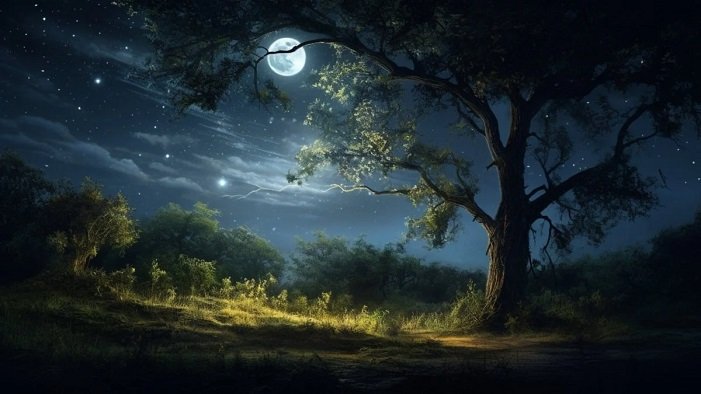Have you ever heard someone say, “The moon is beautiful, isn’t it?” It sounds like an innocent comment about the night sky, but there’s much more to it than meets the eye. This phrase has a deeper, more emotional meaning that many people might not know about.
Let’s explore the hidden layers behind this simple yet profound statement.
What Does “The Moon is Beautiful, Isn’t It?” Really Mean?
In Japanese culture, this phrase holds a very special meaning. It was popularized by the famous Japanese novelist, Natsume Sōseki. He believed that instead of directly saying “I love you,” one could express their feelings more poetically. So, when someone says, “The moon is beautiful, isn’t it?”, what they’re really saying is, “I love you.”
It’s a subtle and romantic way of expressing deep emotions without using the more direct words.
Why Use a Hidden Message?
There’s something magical about not saying things outright, especially when it comes to love. By using this phrase, the speaker is leaving the emotion open to interpretation, making the moment more intimate and thoughtful. Instead of just saying “I love you,” which can sometimes feel too forward, “The moon is beautiful, isn’t it?” adds a poetic and almost dreamlike quality to the sentiment.
How Should You Respond?
So, how do you reply if someone says this to you? If the feeling is mutual, a classic response would be something like, “Yes, it is,” or “It’s breathtaking.” This acknowledges the hidden meaning while also keeping the conversation subtle. If you want to play along with the poetic nature of the phrase, you can respond with something equally heartfelt, like “It’s even more beautiful when I’m with you.”
If you’re unsure of your feelings, a simple nod or smile might be all that’s needed to keep things from becoming awkward.
The Moon Is Beautiful Isn’t It” Responses
- “Yes, it’s breathtaking, just like this moment.”
- A romantic reply that acknowledges both the moon and the shared moment.
- “It’s even more beautiful with you here.”
- A sweet and personal response that reflects your feelings.
- “It truly is, but it pales in comparison to you.”
- A flirty response that takes the compliment further.
- “I’ve never seen it shine so bright.”
- A gentle response that adds to the magic of the moment.
- “Only when I’m with you.”
- A playful yet heartfelt answer.
- “I was just thinking the same thing.”
- A simple, agreeable response that keeps the conversation smooth.
- “It’s beautiful, but your company makes it even better.”
- A response that shifts the focus from the moon to your companion.
- “Yes, but what’s more beautiful is sharing it with you.”
- A thoughtful reply that emphasizes the importance of the moment together.
- “It’s stunning, like the way I feel right now.”
- An emotional response that links the moon’s beauty to your feelings.
- “I couldn’t agree more, it’s perfect tonight.”
- A calm and agreeable reply, reflecting the serenity of the moment.
Where Can You Use This Phrase?
Now that you know what this phrase means, when should you use it? This poetic expression can be perfect during a quiet evening, when the two of you are gazing at the night sky. It works best in moments of calm, where words can blend with the beauty of the surroundings.
It’s not something you say lightly—it’s a phrase meant for someone you truly care about. If used at the right time, it can create a romantic memory that lasts a lifetime.
The Beauty of Subtle Expressions
In a world where words are often used without much thought, phrases like “The moon is beautiful, isn’t it?” remind us of the power of subtlety. Sometimes, saying less means much more, and the unspoken emotions can speak louder than direct words ever could.
So, the next time you’re under the night sky with someone special, and the moment feels just right, try saying this beautiful phrase. You may be surprised by the depth of connection it creates.
Final Thoughts
Understanding the hidden meaning behind “The moon is beautiful, isn’t it?” shows how culture and language can shape the way we express love. Whether you choose to use this phrase or simply appreciate its beauty, it’s a reminder that love doesn’t always need to be spoken directly—it can be shown in poetic and quiet ways.

